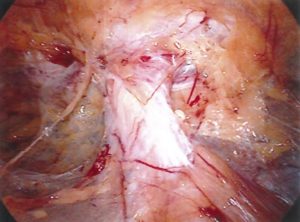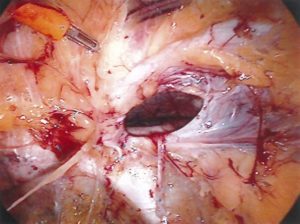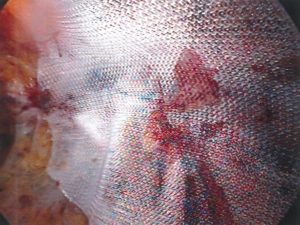Laparoscopic Inguinal Hernia Repair
The Steward Medical Group (SMG) General Surgeons prefer a minimally invasive (Laparoscopic) repair for the majority of their patients with inguinal hernias. They perform both a Trans-Abdominal Pre-Peritoneal repair (TAPP) and well as a Totally Extraperitoneal repair (TEP) for inguinal hernias. The minimally invasive repair is preferred for the recurrent and bilateral inguinal hernias as well for patients who desire a more rapid recovery after surgery.The TEP procedure is performed by creating an operative space outside of the abdominal cavity but behind the muscles of the groin. This procedure allows a more rapid recovery than the traditional “open” repair because there is minimal muscle dissection when the hernia is repaired from the inside. A “Trans-Abdominal Pre-Peritoneal” (TAPP) approach is very similar to the TEP but initially uses the abdominal cavity to begin the dissection. This approach may be selected for the larger and more complex inguinal hernias or in patients who have had prior abdominal surgery. The recovery after both a TEP and TAPP repair is identical. The Bard 3D mesh is used in most cases which minimizes the need for fixation of the mesh in most cases.
Minimal or no fixation,along with minimal muscle dissection,results in less post operative pain and minimizes the risk of nerve entrapment and chronic groin pain syndromes. Because the operative space created during the procedure requires inflation of the abdomen with carbon dioxide, general anesthesia is necessary. Surgery is performed on an outpatient basis. Most patients can get back to regular activities within a week.Since 1994, the surgeons at SMG General Surgery-Norwood have performed more than 3,000 inguinal hernia repairs.
Laparoscopic view of right direct inguinal hernia before reduction
Laparoscopic view of right direct inguinal hernia after reduction
Laparoscopic view of Bard 3D mesh placement right groin




